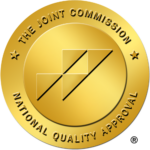Sober Living Outside Inpatient Therapy
The next step towards life-long recovery is fostering a smooth transition into outpatient therapy. After living at a treatment center, and returning to your home, your old surroundings and friend group can be full of triggers. In this article, we’ll share the top tips for sober living post-treatment so you can enjoy your recovery and live an abundant life.
How to live a sober life
When you’re leaving inpatient treatment and graduating to a less intensive form of care, it can feel like you’re going from constant care to a scary level of independence. While this abrupt switch can feel overwhelming, there are ways to make it run smoothly and minimize the triggers you’ll face in the process.
Here’s how to transition out of inpatient treatment into a sober living environment, step by step.
-
Plan ahead
When you’re in a rehab center around the clock, sometimes it feels like all you can do to keep going. The demand on your mind and body can leave you feeling taxed, making it difficult to make any plans for the future. While it’s surely an exhausting time, rehab is the phase where future planning is most important.
2. Use the resources available to you
Luckily, inpatient treatment facilities are well aware of this difficulty, and therefore incorporate future planning into their programming. Many inpatient centers have staff available to help with resume writing, interview practice, job searching, housing applications and so forth. Utilize every resource available to you to boost your education, credentials, experience and knowledge as you transition back into your daily life.
3. Prepare mentally
When you’re in inpatient treatment it can feel like the triggers from your normal life are at bay. You don’t pass your favorite bar on your commute, you won’t cross paths with your dealer and you don’t face the same challenges at work you did before. It’s easy to fear that all those old stressors will come crashing back as soon as you return to the outside world. Chat about your fears with a counselor for personalized advice on how to address them.
4. Build a repertoire of coping skills
When you step out of residential treatment, it’s important to have a positive mindset, but it’s also critical that you’ve mastered the habit of falling back on a coping skill in response to adversity. When triggers pop up you’ll have a hard time relying on breathing techniques, mindfulness or self-talk if you’ve never done it before. Even if it feels silly to practice, the more accustomed you are to using these coping mechanisms, the more easily you’ll turn to them when the urge to use drugs or alcohol strikes.
5. Re-engage your support system
Leaving inpatient rehab is a critical time to reach out to your support system. The friends and family that are eager to see you leave addiction behind can provide a solid level of support as you return to your daily routine and start an outpatient schedule of treatment. Your commitment to rehab can help you repair damaged relationships and show your willingness to change, too.
Tips for sober living post-treatment
Once you’ve done the necessary steps to prepare to re-enter a sober living environment, you’ll want to keep the following tips in mind.
- Constantly identify new triggers in your life: in rehab, you probably noticed certain triggers like physical cravings, frustration and exhaustion. After inpatient treatment, you may identify different triggers like loneliness, financial stress or family strain. It’s important to constantly assess what pushes you to use so you can fight against it.
- Avoid self-destructive behaviors: when you’re in recovery it can be tempting to reward yourself with a small dose of substance use or begin to justify bad behavior. Don’t fall into the temptation and remind yourself that only complete sobriety can get you to where you want to be.
- Take care of yourself: returning to a sober living environment means that you’ll need to focus on healing your body. That means eating right, getting enough sleep and having a regular routine for exercise and movement that feels good. Don’t neglect your body and address any chronic pain the right way.
- Change old habits: when you step back into the world you inhabited before rehab, you may find that not much has changed except you. In order to keep yourself unchanged by what’s around you, you’ll need to adjust your old habits. It may require drastic steps like finding a new roommate, moving neighborhoods or finding a new friend group. All the changes you make will be worth it in the long run.
It’s not easy to transition from inpatient care to a sober living environment in the real world, but with the right preparation, support and coping you can find freedom from addiction that lasts in the long term.
The next step in sobriety
If you’re wondering how to live a sober life, the simplest answer is that you need to start today. The sooner you connect to professional treatment and make a personal commitment to recovery, the sooner you kick substance use and live the life you’ve always wanted. Call Freedom Detox today to get the care you want and need. It’s time to regain your life.





